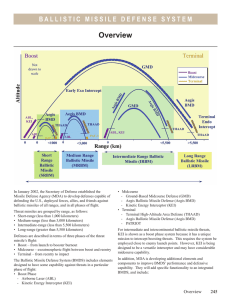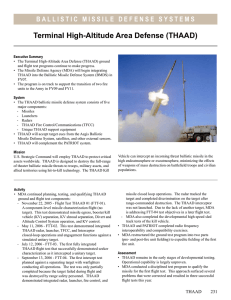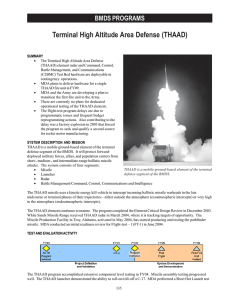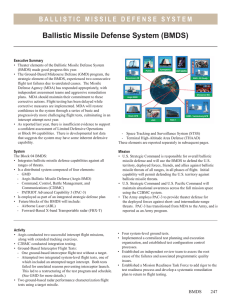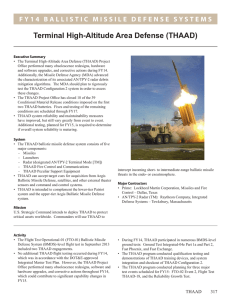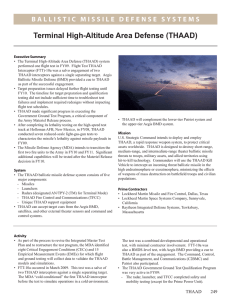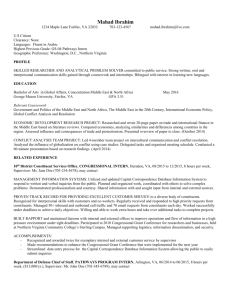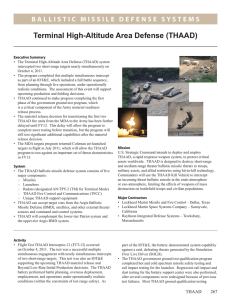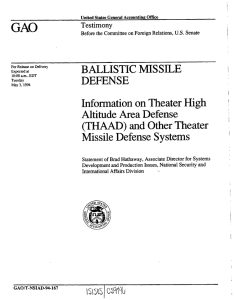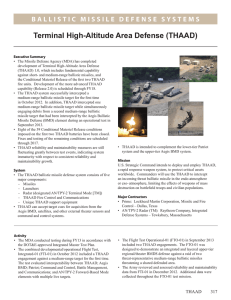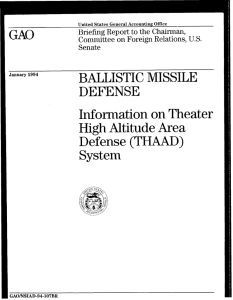Terminal High-Altitude Area Defense (THAAD)
advertisement
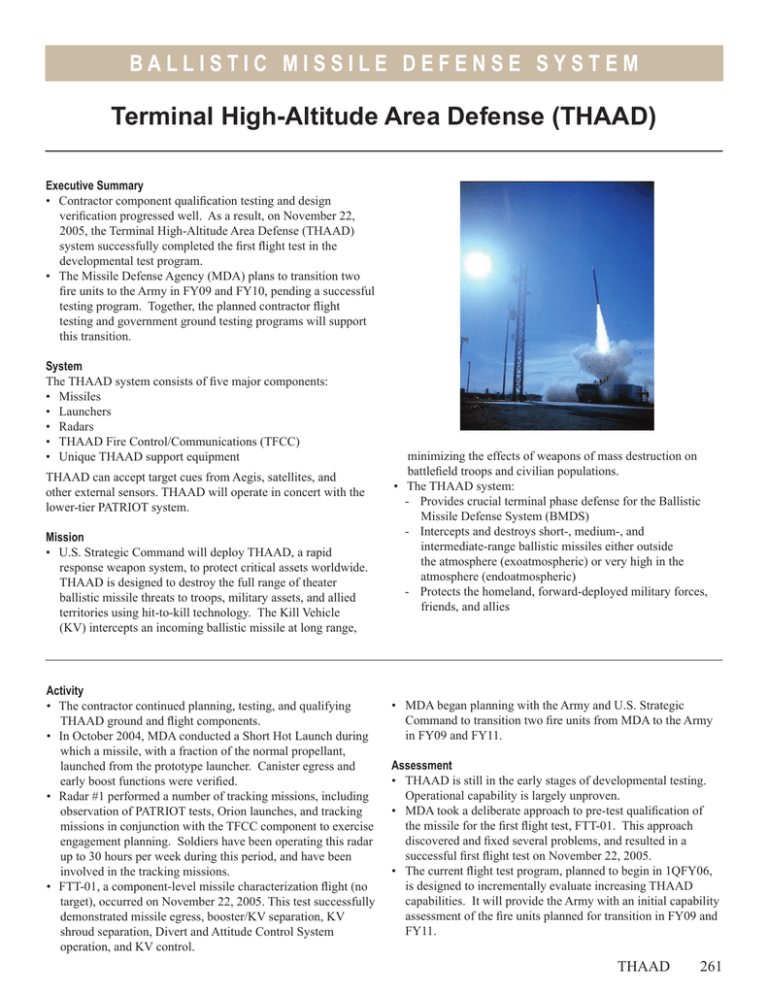
BALLISTIC MISSILE DEFENSE SYSTEM Terminal High-Altitude Area Defense (THAAD) Executive Summary • Contractor component qualification testing and design verification progressed well. As a result, on November 22, 2005, the Terminal High-Altitude Area Defense (THAAD) system successfully completed the first flight test in the developmental test program. • The Missile Defense Agency (MDA) plans to transition two fire units to the Army in FY09 and FY10, pending a successful testing program. Together, the planned contractor flight testing and government ground testing programs will support this transition. System The THAAD system consists of five major components: • Missiles • Launchers • Radars • THAAD Fire Control/Communications (TFCC) • Unique THAAD support equipment THAAD can accept target cues from Aegis, satellites, and other external sensors. THAAD will operate in concert with the lower-tier PATRIOT system. Mission • U.S. Strategic Command will deploy THAAD, a rapid response weapon system, to protect critical assets worldwide. THAAD is designed to destroy the full range of theater ballistic missile threats to troops, military assets, and allied territories using hit-to-kill technology. The Kill Vehicle (KV) intercepts an incoming ballistic missile at long range, Activity • The contractor continued planning, testing, and qualifying THAAD ground and flight components. • In October 2004, MDA conducted a Short Hot Launch during which a missile, with a fraction of the normal propellant, launched from the prototype launcher. Canister egress and early boost functions were verified. • Radar #1 performed a number of tracking missions, including observation of PATRIOT tests, Orion launches, and tracking missions in conjunction with the TFCC component to exercise engagement planning. Soldiers have been operating this radar up to 30 hours per week during this period, and have been involved in the tracking missions. • FTT-01, a component-level missile characterization flight (no target), occurred on November 22, 2005. This test successfully demonstrated missile egress, booster/KV separation, KV shroud separation, Divert and Attitude Control System operation, and KV control. minimizing the effects of weapons of mass destruction on battlefield troops and civilian populations. • The THAAD system: - Provides crucial terminal phase defense for the Ballistic Missile Defense System (BMDS) - Intercepts and destroys short-, medium-, and intermediate-range ballistic missiles either outside the atmosphere (exoatmospheric) or very high in the atmosphere (endoatmospheric) - Protects the homeland, forward-deployed military forces, friends, and allies • MDA began planning with the Army and U.S. Strategic Command to transition two fire units from MDA to the Army in FY09 and FY11. Assessment • THAAD is still in the early stages of developmental testing. Operational capability is largely unproven. • MDA took a deliberate approach to pre-test qualification of the missile for the first flight test, FTT-01. This approach discovered and fixed several problems, and resulted in a successful first flight test on November 22, 2005. • The current flight test program, planned to begin in 1QFY06, is designed to incrementally evaluate increasing THAAD capabilities. It will provide the Army with an initial capability assessment of the fire units planned for transition in FY09 and FY11. THAAD 261 BALLISTIC MISSILE DEFENSE SYSTEM • Government ground testing planned from FY07 through FY11 is on schedule. • MDA, DOT&E, the Army, and the Army’s Operational Test Agency are involved in a review of the ground and flight test program. This review will ensure critical testing is completed before these fire units enter a Force Development Exercise/ Limited User Test to support releasing this equipment to the Army. 262 THAAD Recommendations None.
